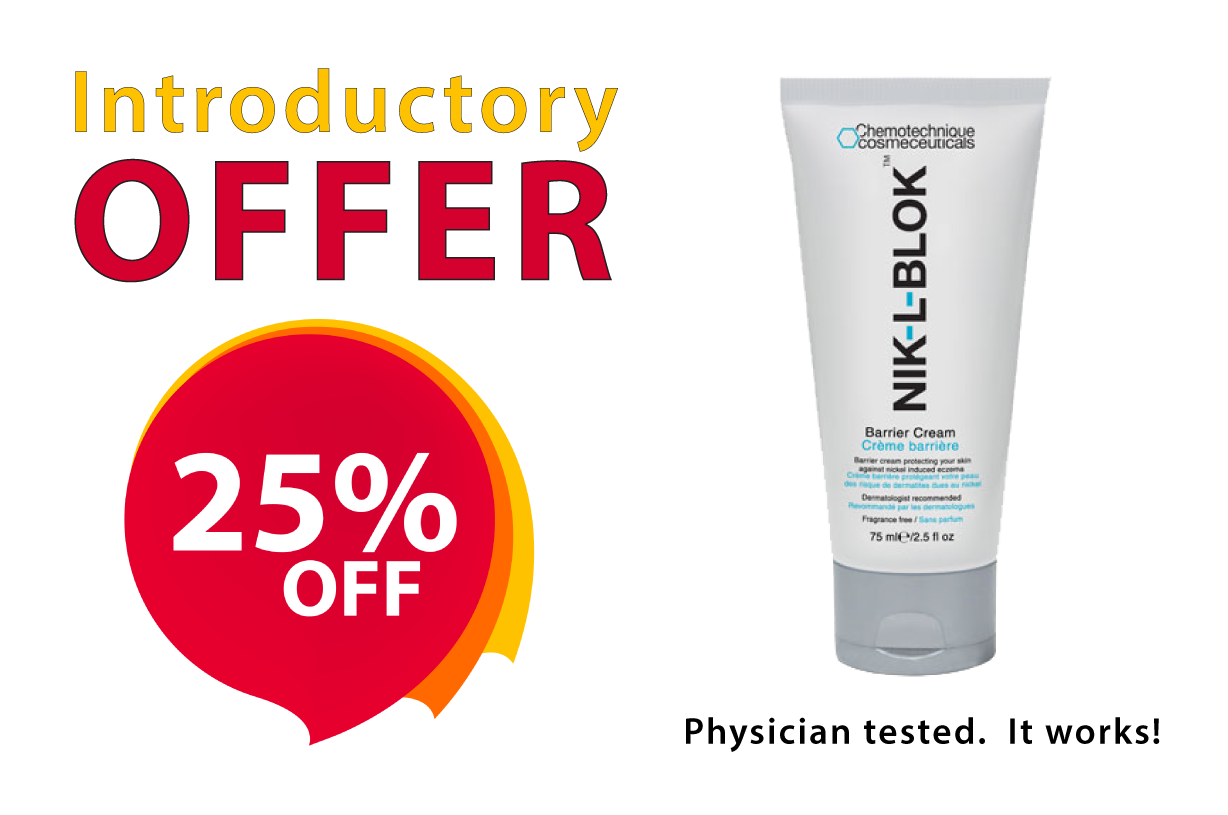Managing Skin Irritation Due to Nickel Allergy

Are you allergic to nickel? You are not alone. 1 in 10 people has a contact allergy to nickel. For the last 50 years nickel has been the most documented allergen in the USA for patients diagnosed with topical (contact) dermatitis.
CONTACT ALLERGY TO NICKEL
Contact allergy is the state of being sensitized to a small-molecule substance coming into contact with your skin. The small chemically reactive molecules penetrate the skin and bind with skin proteins to form a complex that, in some people, causes an allergic reaction. In the case of nickel, it is the small nickel ions released from some nickel-containing metal objects that penetrate the skin to form the allergenic complex.

EXPOSURE LEADS TO SENSITIZATION
Sensitization to nickel occurs when the exposure surpasses a certain threshold and the immune system starts treating the nickel ion protein complex as a threat. This threshold varies between different individuals. For example, your threshold for contact allergy to nickel could be lower or higher than that of your relatives or friends. Once allergic to nickel, any exposure of nickel to your skin may result in an outbreak of Allergic Contact Dermatitis (“ACD”).
SYMPTOMS OF ACD
- Redness, rashes
- Bumps on the skin
- Swelling, blisters
- Itching, dry patches
DIAGNOSIS
If you show symptoms of ACD or suffer from undiagnosed eczema you should seek medical help. A trained physician will determine if you have contact allergy to nickel (or to other common allergens) by performing a diagnostic test.
EVERYDAY NICKEL
Nickel is found in a surprisingly high number of everyday objects, making it difficult to avoid contact. Some common nickel-containing items include:
- Earrings, body piercing jewelry, eyeglass frames
- Necklaces, rings, bracelets, bra hooks
- Zippers, belt buckles, jeans buttons
- Wristwatches, vaping accessories
- Laptops, cellphones and tablets
- Door knobs, keys, coins and metal tools
HOW TO DETECT NICKEL
To find out if metal objects release nickel you can test them with the Chemo Nickel Test™, an easy one-step test. If you are nickel sensitive, a habit of testing metal objects for nickel before purchase or use can drastically reduce your risk of an allergic reaction and improve your quality of life.
PROTECTION WITH A BARRIER CREAM
With the vast number of nickel-containing products, it’s near impossible to completely avoid contact with them. However, application of a nickel-trapping barrier cream to your skin (much like wearing sunscreen for UV protection) can give you direct protection from nickel ions penetrating your skin.
NIK-L-BLOK™ is a revolutionary skin barrier cream with a patented formula that traps nickel or cobalt ions effectively protecting the skin against developing ACD. The patented formula of NIK-L-BLOK™ uses a metal ion chelator to bind the ions from nickel … preventing the ions from penetrating the skin.

BENEFITS OF NIK-L-BLOK™ BARRIER CREAM:
- improves hydration
- provides emolliency to maintain skin integrity
- fragrance-free, non-comedogenic, hypoallergenic
- fast absorbing, non-greasy composition
- cost effective



